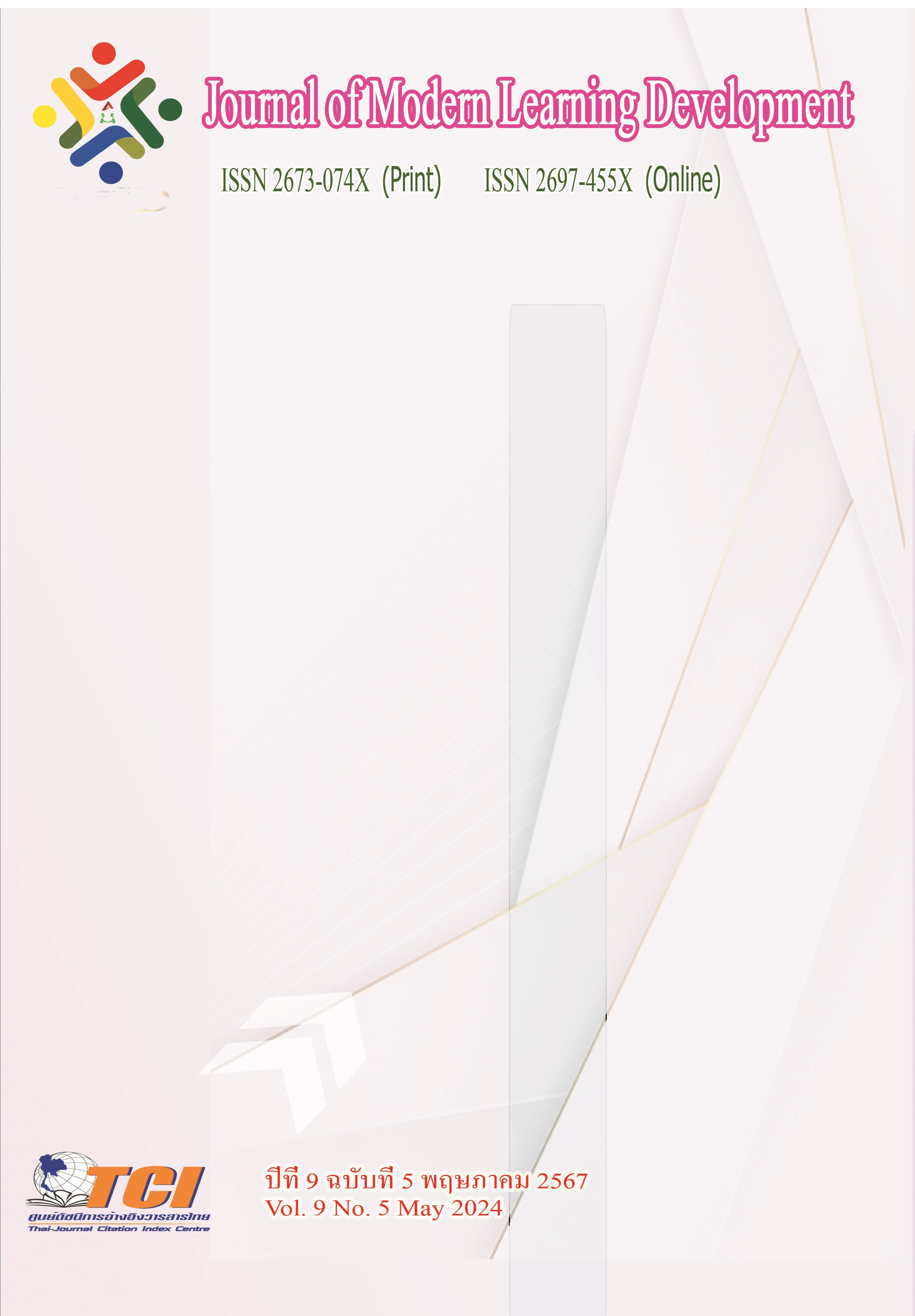Flooding Problems: Building Collaboration in Community Management
Main Article Content
Abstract
Flooding was a danger caused by flooding conditions or flash floods, overflowing river banks, which were caused by heavy rain or continuous rain for a long time and the amount of rainfall was greater than normal, which caused dangerous to humans, properties and caused various epidemicstherefore, the purpose of this academic article was to study the ways of building cooperation in community managing on flooding problems. According to the study, the authors found that cooperation in community flood management should be implemented according to the principles of disaster management emphasizing 4 main activities in 3 periodswhich were consistent and related, for example, the pre-disaster phase had 2 activities: impact reduction and preparedness, the phase during the disaster was emergency management or response, and the post-disaster phase was recovery.This was to be used to prevent, reduce impacts, reduce risky, reduce vulnerability caused by disasters and avoid loss and damage to life, property, society and the environment of the people or the government.
Article Details
References
กรมป้องกันและบรรเทาสาธารณภัย. (2559). การลดความเสี่ยงจากสาธารณภัย. (พิมพ์ครั้งที่ 3). กรุงเทพมหานคร: เวิร์ค พริ้นติ้ง.
กรมอุตุนิยมวิทยา. (2562). อุตุนิยมวิทยา : ภัยธรรมชาติ. กรุงเทพมหานคร: โรงพิมพ์กรมอุตุนิยมวิทยา.
กิตติศักดิ์ แสงทอง. (2557). รูปแบบความร่วมมือในการจัดการน้ำท่วมระหว่างองค์กรปกครองส่วนท้องถิ่นและชุมชน : กรณีศึกษาพื้นที่น้ำท่วมซ้ำซากในภาคใต้ของประเทศไทย. วิทยานิพนธ์ปริญญาดุษฎีบัณฑิต (ภาควิชารัฐประศาสนศาสตร์). บัณฑิตวิทยาลัย: มหาวิทยาลัยสงขลานครินทร์.
คณะกรรมการป้องกันและบรรเทาสาธารณภัยแห่งชาติ. (2564). แผนการป้องกันและบรรเทาสาธารณภัยแห่งชาติพ.ศ. 2564 – 2570. กรุงเทพมหานคร: กรมป้องกันและบรรเทาสาธารณภัยกระทรวง มหาดไทย.
ปุณิกา พรานพนัส. (2563). การจัดการอุทกภัยในภาวะวิกฤตของไทย. ดุษฎีนิพนธ์ปรัชญาดุษฎีบัณฑิต (สาขาวิชารัฐประศาสนศาสตร์). บัณฑิตวิทยาลัย: มหาวิทยาลัยรามคำแหง.
พรภณ พงษ์เพชร. (2553). ความร่วมมือในการป้องกันปัญหายาเสพติดระหว่างองค์กรภาครัฐและองค์กรภาคเยาวชน ศึกษาเฉพาะศูนย์อำนวยการประสานงานป้องกันและแก้ไขปัญหายาเสพติดภาคเยาวชน (ศอปส.ย). วิทยานิพนธ์รัฐศาสตรมหาบัณฑิต (สาขาวิชารัฐศาสตร์). บัณฑิตวิทยาลัย: มหาวิทยาลัยธรรมศาสตร์.
รพรชัย อุทยารักษ์, เกียรติชัย วีระญาณนนท์ และอนันต์ ธรรมชาลัย. (2564). ปัจจัยที่ส่งผลต่อการจัดการ ความเสี่ยงด้านการผลิตจากอุทกภัยของโรงงานอุตสาหกรรมในเขตภาคกลางตอนบน. วารสารมนุษยศาสตร์และสังคมศาสตร์ มหาวิทยาลัยราชพฤกษ์. 7 (2), 214-216.
สมชญา ศรีธรรม และรวี หาญเผชิญ. (2563, กรกฎาคม - ธันวาคม). ความสัมพันธ์ของปัจจัยต่อการนำองค์ความรู้มาใช้ในการจัดการน้ำท่วมของชุมชนลุ่มน้ำชี-น้ำพอง ในจังหวัดขอนแก่น. วารสารการบริหารปกครอง (Governance Journal). 9 (2), 100-137.
สายฝน แสงหิรัญ ทองประเสริฐ. (2558). เครือข่ายองค์กรชุมชนเพื่อการจัดการภัยพิบัติในคาบสมุทรสทิงพระ จังหวัดสงขรา. วิทยานิพนธ์วิทยาศาสตรมหาบัณฑิต (สาขาวิชาการจัดการสิ่งแวดล้อม). บัณฑิตวิทยาลัย: มหาวิทยาลัยสงขรานครินทร์.
Agranoff, R. & McGuire, M. (2003). Collaborative Public Management : New Strategies for Local Governments. Washington, DC : Georgetown University Press.


